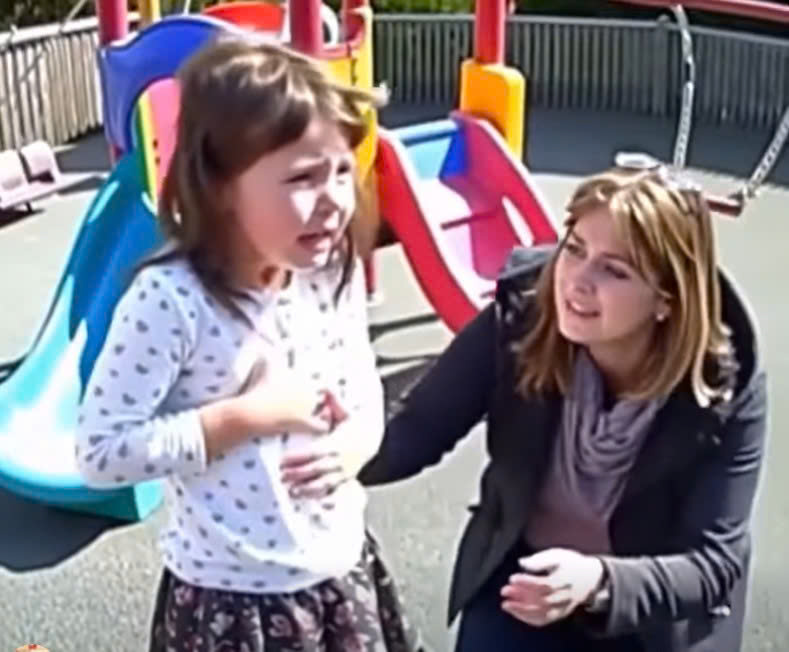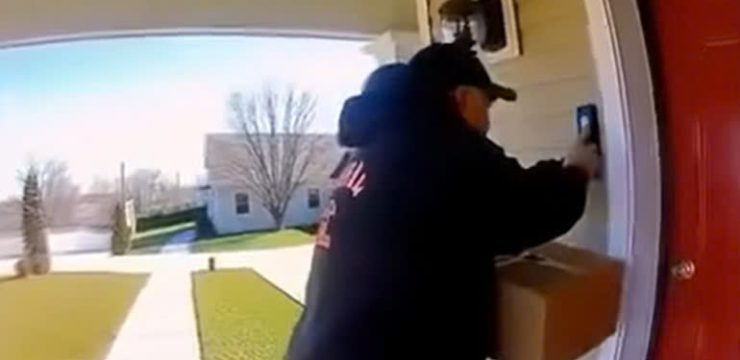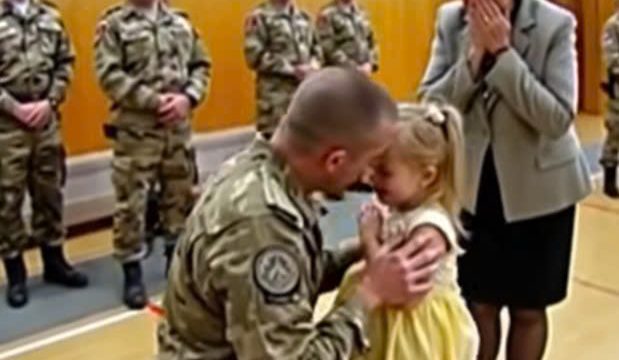The morning sun streamed softly through the windows of Lincoln Elementary, painting golden streaks across the desks in Room 204. For most of the students, it was just another day filled with math lessons, story time, and chatter about weekend plans. But for one little girl named Emily, even walking into class felt like a struggle. Her steps were small, hesitant, and heavy, as though every movement required courage she could barely find.

Her teacher, Rachel, noticed immediately. Rachel had a gift for paying attention—not just to grades or homework, but to the subtle shifts in her students’ behavior. Emily had once been an energetic, talkative child who loved drawing rainbows and butterflies. Lately, though, something had changed. She moved slower, spoke less, and her once bright eyes carried a weight too heavy for a child her age. That morning, when Rachel saw Emily wincing as she walked, her instincts told her something was terribly wrong.
During recess, Rachel gently asked Emily if she was feeling okay. The little girl hesitated before whispering that she “fell at home.” But Rachel wasn’t convinced. The explanation didn’t match what she saw—the stiffness, the fear, the way Emily flinched when anyone got too close. Later that day, while helping Emily put away her crayons, Rachel noticed something that made her heart stop. What she saw suggested that this was no ordinary fall. Without hesitation, she called 911.
Paramedics arrived swiftly, their calm professionalism masking the urgency of the situation. Emily was taken to the hospital for evaluation, and though she was frightened, Rachel stayed by her side until she was safely in medical care. Once the ambulance pulled away, Rachel returned to her classroom, shaken but determined to hold it together. Her students stared at her with worried eyes, whispering about what had happened. Taking a deep breath, she addressed them gently. “Emily is safe,” she said. “She’s getting the help she needs and will be back soon.”
While the classroom settled into uneasy quiet, a much larger effort was already underway. Authorities launched an immediate investigation. The police and child protective services worked together, determined to uncover the truth behind Emily’s condition. They interviewed teachers, classmates, and neighbors, piecing together fragments of her home life. Rachel’s detailed observations—her notes about Emily’s recent absences, the unexplained bruises, the withdrawn behavior—became vital evidence.
At the Carter household, Emily’s mother was questioned. She seemed nervous, avoiding eye contact, her answers inconsistent and vague. When asked about Emily’s injuries, she claimed not to know how they happened. The investigators noted her defensiveness and the uneasy atmosphere of the home. Something didn’t add up. As days passed, suspicions deepened. The stepfather, who had been noticeably absent during initial questioning, soon became the focus of their attention.
Meanwhile, Emily remained in the hospital, where she was surrounded by compassionate nurses and doctors. Their care went beyond treating physical wounds—they offered comfort, reassurance, and a safe space for her to speak. Slowly, through tearful conversations and gentle encouragement, Emily began to reveal the truth she had been too afraid to share. Her stepfather had been hurting her for months, warning her to stay silent.
The revelation shattered everyone who heard it. Rachel wept quietly in her car after learning the truth, grateful she had trusted her instincts. The community of Lincoln Elementary was stunned. Parents who had once waved politely to the Carters in the school parking lot were horrified. Many reached out to Rachel, thanking her for her vigilance and for being the kind of teacher who truly saw her students—not just their grades, but their hearts.
Emily’s stepfather was arrested soon after. The charges were serious, and the community breathed a collective sigh of relief knowing that the threat to Emily was gone. Her mother, faced with the consequences of her silence, was required to attend counseling and family court proceedings. Through it all, Emily was placed under the care of her grandmother—a kind, patient woman who made it her mission to restore the little girl’s sense of safety.
Recovery took time, but love has a way of rebuilding even the most fragile spirits. With therapy, emotional support, and the warmth of her grandmother’s home, Emily began to heal. Her laughter returned, soft at first, then brighter each day. She rediscovered her curiosity—asking questions, reading picture books, and drawing again. This time, her rainbows were bolder, her butterflies stronger, their wings open wide.
Back at Lincoln Elementary, Rachel turned the painful experience into a lesson for her class. Without naming anyone, she spoke about kindness, empathy, and courage—the importance of helping others and speaking up when something feels wrong. She wanted her classroom to be more than just a place of learning; she wanted it to be a sanctuary where every child felt seen, valued, and safe.
Months later, the day everyone had been waiting for finally came—Emily’s return to school. As she stepped through the classroom door, her classmates erupted in cheers. They surrounded her with hugs and smiles, eager to welcome her home. Rachel watched from her desk, tears glistening in her eyes, as Emily walked confidently to her seat. The journey to full recovery would still take time, but what mattered most was that Emily was surrounded by love, protection, and hope.
That evening, after the children had gone home, Rachel sat alone in the quiet classroom. The late afternoon sun cast long shadows across the chalkboard, and she found herself reflecting on the past few months. She thought about the fear in Emily’s eyes, the courage it took for her to speak out, and the strength that came from a community refusing to look away.
She knew she would never forget the day she made that 911 call—or the little girl whose bravery changed so many lives. In a world that sometimes moves too fast to notice small signs of distress, Rachel’s attentiveness had made all the difference.
For Emily, the road ahead was one of healing and rediscovery. For Rachel, it was a reaffirmation of why she became a teacher in the first place—not just to educate, but to protect, nurture, and stand up for those who can’t yet stand up for themselves.
And so, in Room 204, where lessons are usually about numbers and letters, one of the most powerful lessons of all quietly unfolded: that compassion, courage, and love can truly save a life.





